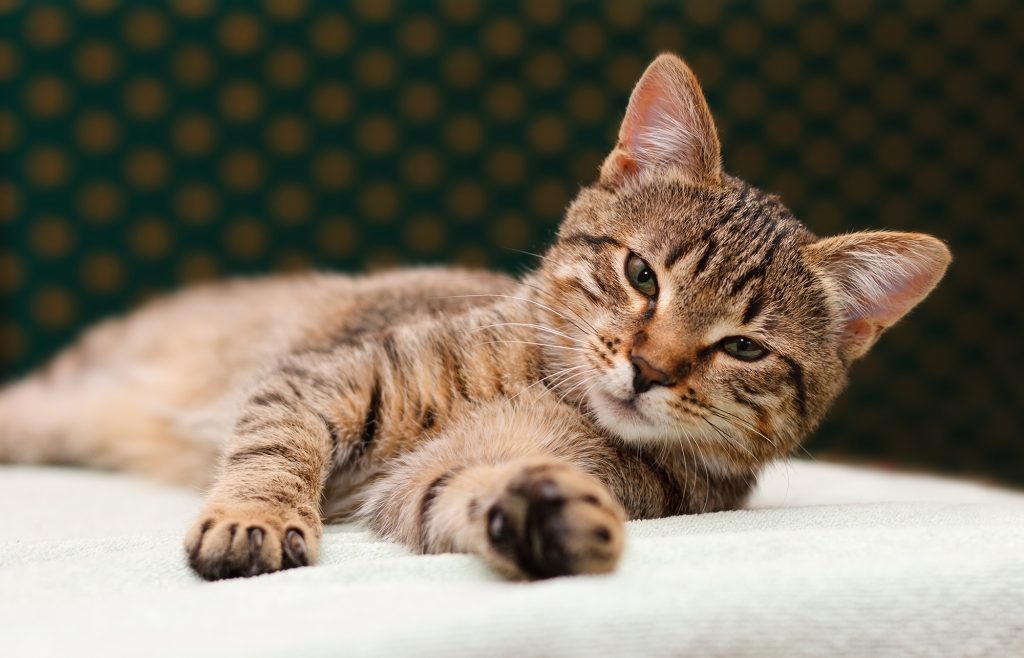When I was a kid we had a cat with urinary crystals. I didn’t know it, but that was why he peed in our bathtub all the time. I just thought the poor thing had become senile. As my mind turns to spring cleaning, I remember old Boo Boo Kitty and the regular mess he made for my Mom. I’m sure other pet owners have similar stories, so let’s talk about this a bit.
One of our customers recently told us how her dog’s urinary crystal issue cleared up after transitioning to Carna4. Delighted with the results, she wanted to know exactly what urine pH level Carna4 produced.
The answer is not a definitive number but speaks more to the holistic way an animal’s body functions. A pH level is defined as the concentration of hydrogen ions in solution, which determines the measure of acidity or alkalinity of that solution. A low pH (under 7) is acidic, and a high pH (over 7) is considered alkaline.
A healthy urine pH for a dog is a slightly acidic range of 5.5 – 7 , and for cats a healthy pH level is within 6.0-6.4 But here is the rub: there are two main types of crystals, one forms in a more acid pH and the other forms in more alkaline. It has been shown that the potential for struvite crystal formation is reduced if urine pH is lower than 6.6 whereas calcium oxalate crystal formation is less likely to occur at a higher urinary pH. Urine acidification together with a low magnesium intake increases the risk of calcium oxalate formation in domestic cats but decreases the chance of struvites.
So what do we do?
First understand that urine pH is influenced by multiple factors and is the sum of all the body’s metabolic processes, from digestion to elimination, each working together to determine the acidity or alkalinity of the waste product. The body does not have one single pH level, however. Instead, different systems within the body maintain ideal pH levels for what is needed for those functions. For example, the pH of the mucous membrane in the mouth will be different than the pH of the blood. Body systems are designed to function at ideal levels of acidity or alkalinity, and when the pH is off in one area it is often struggling in another. Urine pH is a handy measure for assessing whether the uro-genital and digestive systems are functioning at an acid/alkaline level conducive to discouraging crystal formation. It is important to note that struvite crystals are present in many, many animals without causing any problem at all. It is only when a urinary tract infection is present, causing those struvites to become urolithic crystals that the dog or cat suffers. It is actually the presence of a UTI + struvite cystals that precipitates the presence of these painful bladder stones.
Diet is the key to prevention, and not just the low-protein diet you may have heard about. While low-protein will help resolve a stones issue in the short term, it is NOT a long-term solution, and can in fact backfire by robbing the body of important protein needed to repair the immune system! Preventing a UTI, or any infection for that matter, by following a healthy whole foods diet is actually the way to preventing stones because certain ingredients have a big impact on the pH. A diet containing a lot of highly processed ingredients such as meat or vegetable meals and additives such as lactose, sucrose or fructose elevates and creates an unbalanced concentration of calcium in an animal’s urine. Too much magnesium will do that too, as well as a low level or poor source of phosphorus, which also raises the calcium concentration – creating oxalate crystals and potentially kidney stones. Vitamin imbalances and formulation errors that can occur with synthetic premixes or sub-standard ingredients, can also wreak havoc. A diet too low or too high in Vitamin D can increase urine calcium – leading to crystals or urinary disease over time. Similarly, a Vitamin B6 deficiency can increase blood oxalate levels and also form crystals.
Although the ingredients in your animal’s food are key, the pH resulting from dietary choices is still very important for overall health. In practical terms, meats, fats and sugars creates acidic ash, whereas plant foods and whole grains create alkaline, neutralizing ash. Animals need mostly meat to be healthy, but an over-acidic pH body environment can cause inflammation and allow diseases to thrive. We know that cancer cells require an acidic environment, so a more over-all neutral to alkaline body system encouraged by a balanced whole food diet will help deter this scourge.
In the end, knowing specific urine pH levels are less important than knowing how to feed your animal properly with whole, minimally processed foods with no synthetics because bladder health is the result of a variety of the dietary factors explained above. Keeping the whole animal in a healthy state so as to avoid infection is the top strategy for avoiding crystals. Check out the new Carna4 Cat Food containing only well-selected whole foods required to maintain naturally good health in every cat so none of them end up wanting to pee in the bathtub!












